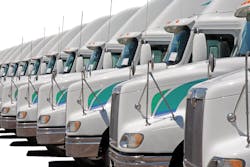Tariff Shocks and How to Cope (Commercial Vehicle Edition)
In recent months, the commercial vehicle industry has found itself at the center of a shifting geopolitical chessboard. The election of President Donald Trump and the recent announcement of sweeping new tariff policies—followed by a 90-day pause—have thrown supply chains into uncertainty, disrupted investment planning and increased the cost of doing business.
For OEMs and suppliers alike, understanding how these dynamics will play out is essential to identifying flexible strategic options that enable long-term competitiveness.
Enter Game Theory
Game theory, the science of strategic interactions between stakeholders, provides a powerful lens to anticipate how players—governments, OEMs, and suppliers—will behave in complex, high-stakes environments.
At its core, each game’s outcome is based on three fundamental questions: Who are the players? What are their options? And what do they want? From there, game theory models how each actor is likely to respond to the choices of others, helping leaders "look around corners" and make better decisions in times of uncertainty.
More Trucking News from IndustryWeek Partner Publication FleetOwner
The game was played well before President Trump’s announcement of the most sweeping tariff package in U.S. history on what it dubbed “Liberation Day,” which only enhances its value as the game’s insights turned out to be highly prescient.
The analysis yielded important insights, divided across short- and long-term time frames:
Short-Term Impacts: Immediate Reactions and Tactical Shifts
Tariffs will rise: The Trump administration sees multiple benefits—political and economic—in imposing tariffs and is likely to escalate them. Retaliation by foreign governments is inevitable.
Policy uncertainty will persist: Tariff levels and trade rules will remain volatile as negotiations evolve and domestic priorities shift, creating operational ambiguity.
Price adjustments will be swift: OEMs and suppliers—both foreign and domestic—will rapidly pass through tariff costs. U.S.-based players may also capitalize on new protectionist advantages to expand margin and market share.
Near-term first-mover advantage is possible: Companies able to quickly adapt pricing and sourcing may gain an early edge. However, this must be weighed against the risk of recession or sharp policy reversals.
Limited industry influence: Despite the magnitude of impact, industry players will have little sway over trade policy, emphasizing the importance of adaptation over advocacy.
Long-Term Impacts: Strategic Realignments and Structural Change
Supply chain regionalization: As tariffs endure, OEMs will increasingly re-source components and encourage local production, shifting toward regional supply chains across the U.S., Europe and Asia-Pacific.
Global overcapacity risk: These adjustments will increase capacity without corresponding demand growth, threatening margins and raising the risk of underutilized assets.
Competitive pressure on supplier capacity: A scramble for domestic supply may spark bidding wars, creating an advantage for those who act early and have strong productive relationships with their suppliers—but potentially at elevated cost.
Need for operational flexibility: Companies will benefit from production systems that allow fast, low-cost reallocation across regions—a “no-regret” investment in a volatile world.
Expanded service offerings: As vehicle purchases decline in the face of uncertainty, OEMs will need to pivot toward services that extend the life of existing fleets and create new revenue streams.
Acting on the Insight: One Game Does Not Fit All
While the high-level game described here offers valuable directional guidance, the real power of game theory lies in its ability to tailor insights to the specific strategic context of each company. Product portfolio, cost structure, geographic footprint, and supplier relationships are unique—and so is the game every firm is playing.
Game-theory models that reflect their particular challenges and opportunities can assess not just the impact of tariffs, but also incorporate demand shifts, competitor moves, regulatory developments and geopolitical risk into flexible decision-making.
In a world of rising trade barriers, policy unpredictability and volatility, resilience and adaptability are not luxuries, but necessities. Game theory can help build them.
This article originally appeared in the C-Suite newsletter. It is used with permission.
About the Author
Alan Berger
Managing Partner, abcg AB
Alan Berger is managing partner at abcg AB, a consulting firm specializing in the commercial vehicle industry. Among other roles, Berger has served as chief technology officer for CNH Industrial and was senior vice president, technology, at Volvo Construction Equipment.
John Jullens
AMG Leadership Team Member, Arthur D. Little/Managing Partner, Arbalète LLC
John has more than 30 years of management consulting and industry experience in North America, Europe, and China. He specializes in developing growth strategies for clients in the automotive and industrial manufacturing sectors, including demand-side transformation, new market entry, globalization/emerging markets, brand and customer strategies, organizational redesign, and M&A due diligence and post-merger integration. He has published extensively on these topics for such leading publications as Harvard Business Review, Harvard Business Review China, CEIBS Business Review, and Strategy+Business.
Maria Metz
Consulting Associate, abcg AB
Marc S. Robinson
Principal, MSR Strategy
Marc S. Robinson, Ph.D., managing partner, Arbalète LLC, is an economist and strategist with more than 30 years of experience advising leaders in multi-national companies, governments, and non-profit organizations. He spent most of his career as an internal consultant for General Motors. He also served in the White House on the President’s Council of Economic Advisors and taught at UCLA and Stanford University. He and his colleague John Jullens publish the applied business strategy newsletter C-Suite.
